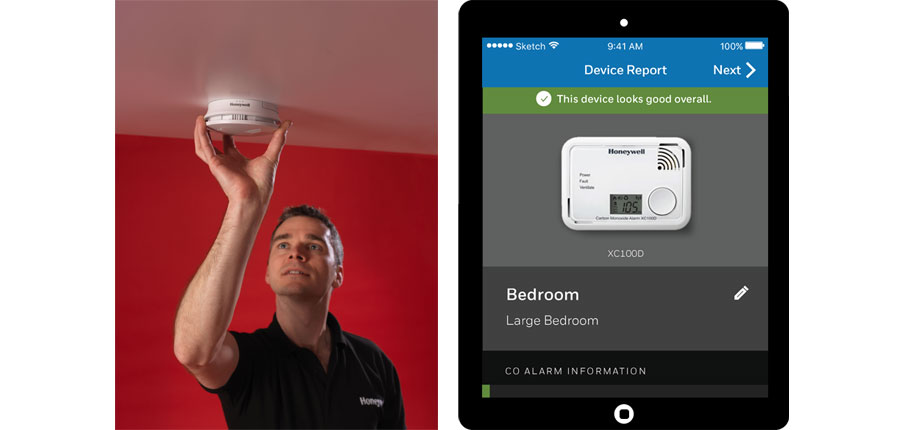When specifying for high rise developments, one of the biggest priorities on a specifier’s list is the safety of the building’s occupants. With this in mind, it’s crucial to be in the know when it comes to the most effective CO, smoke and heat alarms, as well as best practice when it comes to siting them. Adrian Keats from Honeywell’s Home Safety business explains.
Unfortunately, fire and CO safety in residential tower buildings is never out of the spotlight for long. In October 2015, in order to improve the safety of such developments, the government introduced new smoke and CO regulations for landlords. According to regulation, landlords must install a smoke alarm on every floor of each property, along with a CO alarm in rooms containing a solid fuel burning appliance. Non-compliance will result in a fine, and although no price can be put on the cost of a life, it is hoped that this financial penalty is a great enough deterrent against failing to install the relevant products.

Throughout various iterations of safety standards, the level of safety provided for those living in high rise buildings has always been intended to equate to that of those living in houses. The key here is ensuring that there are processes in place so residents are alerted to any danger quickly.
However, this presents a challenge. Alerting an entire building to a problem that initially developed in an individual flat, and not just the immediate tenants and their neighbours, is vital. This is especially problematic when we consider that those on higher floors cannot use lifts in a fire emergency, therefore limiting their means of escape.
It’s for this reason that interconnected alarm systems are becoming increasingly popular in high rise buildings. An interconnected system means that every smoke, heat and CO alarm in the building is linked, and if one is triggered, all of the others will also activate. This ensures that every occupant is alerted to the danger no matter where in the building they are.
Despite some preconceptions, wireless systems which incorporate high-quality, sealed units are easily just as reliable as wired variations, especially if the alarms can be locked to the wall for protection against damage or tampering.
Our X-Series alarms, for example, can all be connected wirelessly using a plug-in module to form a full alarm system of up to 32 connected alarms. The XW100 module simply clicks into any X-Series alarm, offering full protection to a building within minutes and features easy-to-understand LED indicators to ensure the tenants and facilities manager can be confident that the residence is protected.
For landlords, building managers and engineers there is also the X-Series Alarm Scan App which can supply information on the status of enabled X-Series carbon monoxide (CO) alarms directly to a smart phone or tablet. This makes servicing quicker and easier, completely removing the need for additional hardware and eliminating noisy data transfer sounds.
With such a wide range of requirements to address, the key is to be aware of the best products available and to understand their applications. This will help safeguard high rise buildings and ultimately, save lives.
For more information, please visit the Honeywell website
- Log in to post comments















